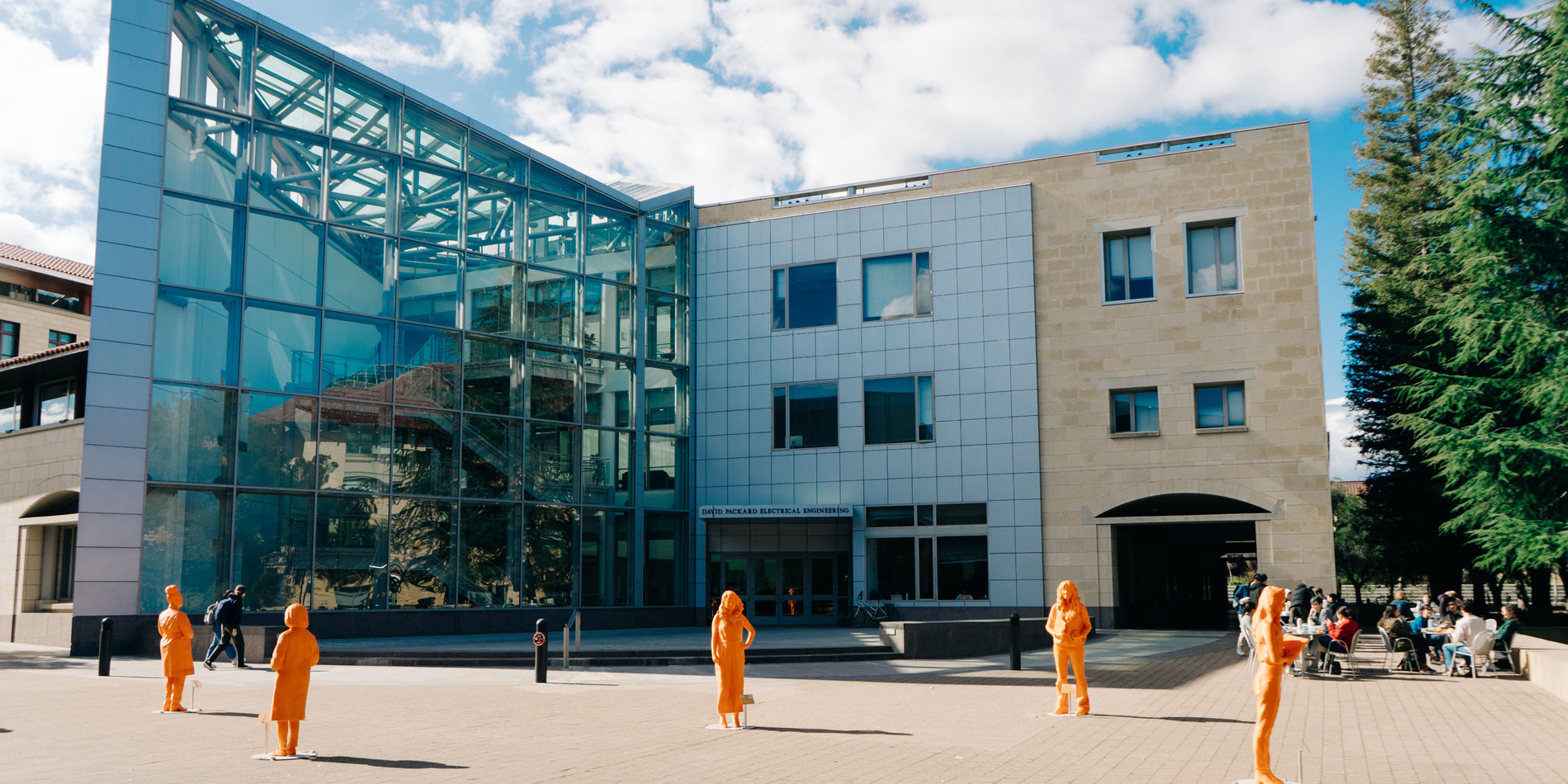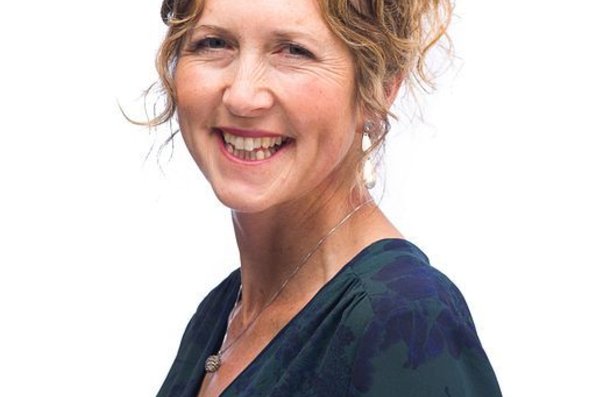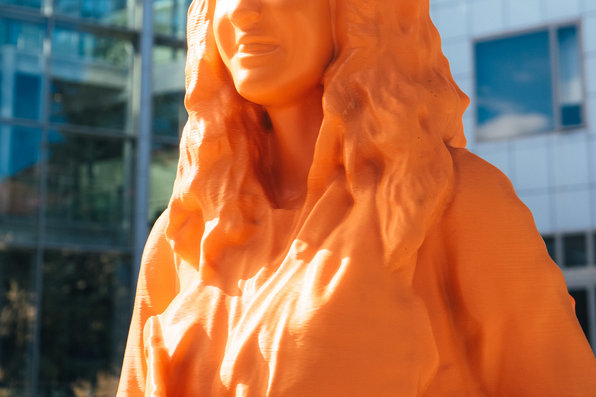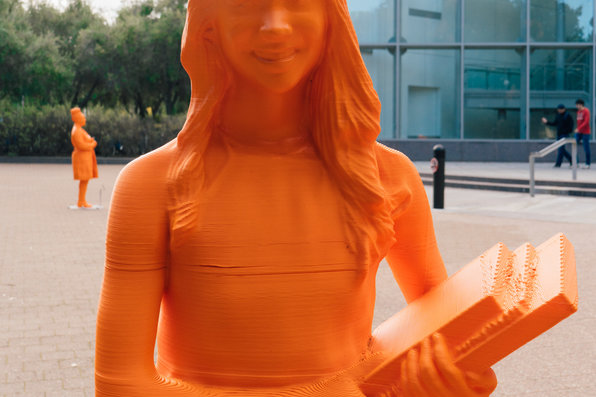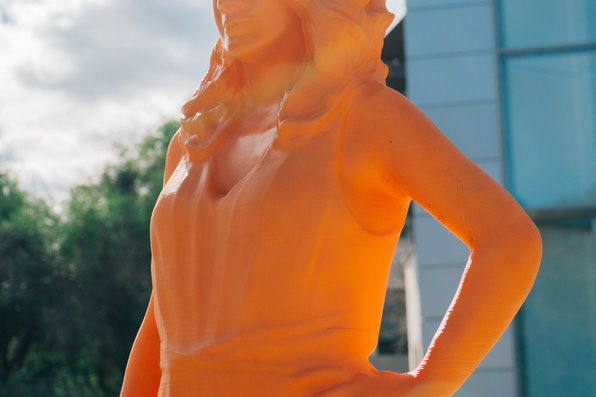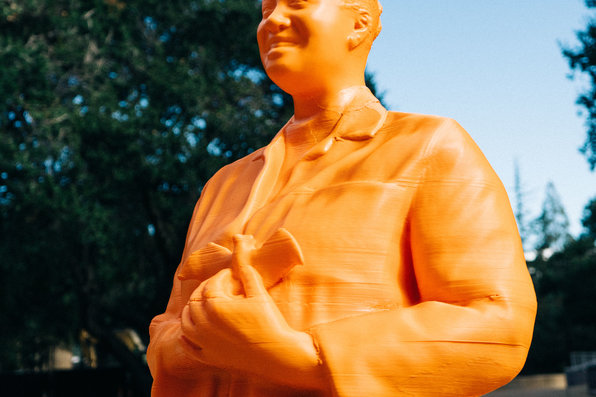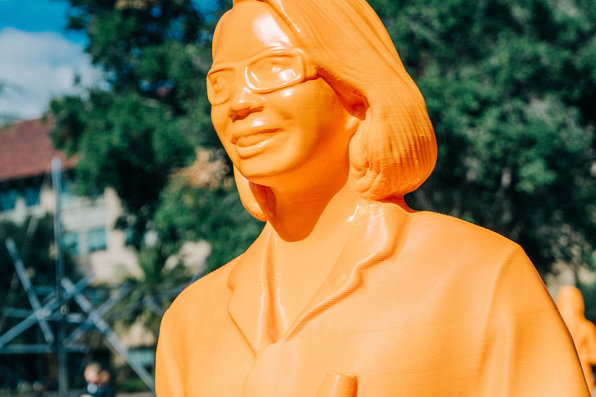Breaking the mold: Vibrant statues highlight women in STEM
Five life-size, bright orange statues of contemporary STEM women innovators and role models affiliated with Stanford were recently installed between the Hewlett Teaching Center and the Packard Electrical Engineering Building as a satellite installation of IfThenSheCan – The Exhibit. The statues, on loan from the subjects, will occupy their temporary home alongside living pedestrians and bicyclists through April. The installation promotes the idea that if we support a woman in STEM, then she can change the world.
The five Stanford women in STEM represented in the pop-up installation are fire scientist Jenny Briggs; dancer and roboticist Catie Cuan; mechanical engineer and toymaker Debbie Sterling; microbiologist Dorothy Tovar; and molecular architect and polymer chemist Helen Tran.
Individual stories of the five women are accessible through QR codes at the feet of their 3D figures that link to videos, images, and biographies.
Briggs used to tell her kids about the statues on the Stanford campus that she loved as an undergrad. "I'd wave to The Thinker as I left the library at midnight or flashed past on my ‘90s rollerblades, but would never have guessed that some bright glowing orange counterparts representing modern women in STEM would appear for an exhibit there someday,” she said. "I feel so lucky that the mentors, classes, and research opportunities I had at Stanford fueled my lifelong love of science, in spite of some literal crashes with both grades and rollerblades along the way. I've drawn on lessons learned from my major in human biology almost every day since, not to mention my undergrad job with the world's best scientists (preschoolers!) at the Stanford Children's Center.”
Similarly, Sterling recalls walking through the Rodin sculpture garden with her family on her first day as an engineering undergraduate at Stanford and feeling equal parts awe and intimidation. “Deep down, I worried that Stanford had accepted me by mistake and that soon, everyone would figure out that I didn’t belong there,” she said. “Back then, I never would have imagined that nearly 20 years later, there would be a statue of me on campus. I hope it sends a message to all students, especially the young women on campus who may be second-guessing themselves like I did, that they do belong at Stanford and they do belong in STEM.”
One hundred and twenty statues made up the complete IfThenSheCan – The Exhibit that was installed in several locations around the United States in 2020-24. In Dallas and the Smithsonian Institution in Washington, DC, the exhibit set a record for the most women statues ever assembled in one location, at one time. Each subject stood in a scanning booth that combined 89 cameras and 25 projectors to generate a 3D image. Over 10 hours, a 3D printer built up layers of acrylic gel to create a life-size figure.
“I never even dreamt of having a life-size statue, at Stanford nonetheless, and I hope its presence will inspire some local Bay Area girls like me," Tran said.
IF/THEN is an initiative of the Lyda Hill Philanthropies designed to activate a culture shift among young girls to open their eyes to STEM careers. The STEM innovators were selected through a rigorous process committed to inspiring the next generation. Lyda Hill Philanthropies partnered with the American Association for the Advancement of Science (AAAS) to select and manage the AAAS IF/THEN Ambassadors program that engages high-profile role models to inspire middle school girls.
Cuan reflects that as an artist, an engineer, and the first person in her family to receive a Ph.D., her background and journey was anything but traditional. She states, “IfThenSheCan – The Exhibit encourages people from many backgrounds, just like me, to pursue careers in STEM, and to recognize that STEM leaders, while not all orange, are all unique."
If/Then Statues
In the gallery below you can view the actual images of each woman, along with their If/Then statue.

